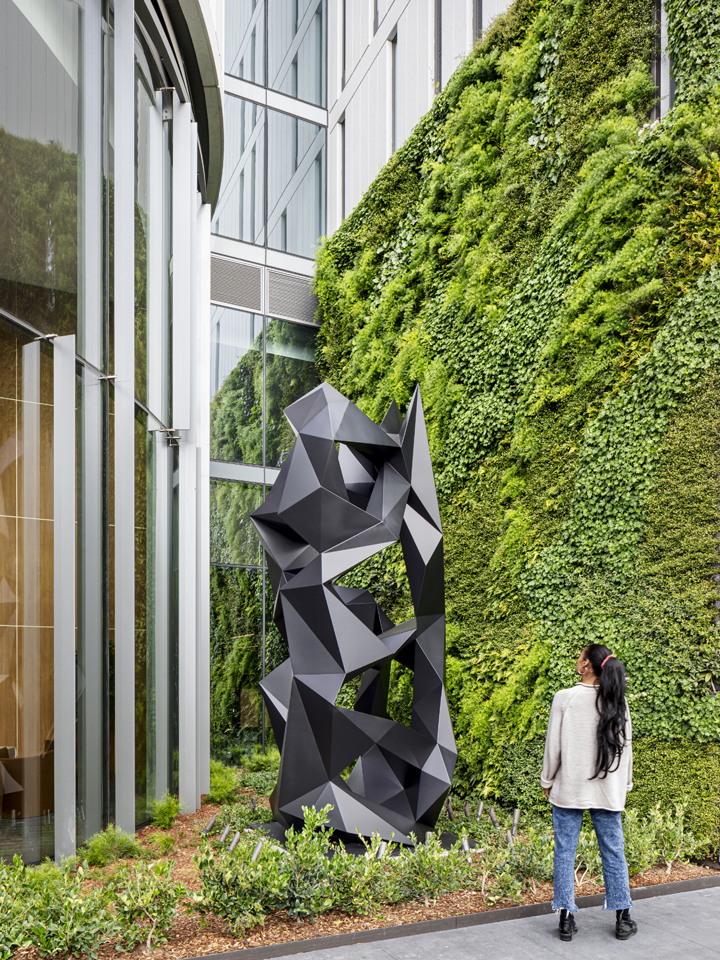Notifications

7 minutes, 3 seconds
-37 Views 0 Comments 0 Likes 0 Reviews

In the quest for sustainable landscaping, the use of native plants has gained recognition as a foundational strategy for creating resilient and eco-friendly walls. Native plants, which are species that have evolved and adapted to a specific region, offer unique advantages in ecological integrity, biodiversity, and environmental sustainability. Incorporating these plants into vertical gardens or green walls not only enhances their aesthetic value but also contributes positively to local ecosystems. This article explores the benefits of using native plant palettes for vertical gardening, practical design considerations, and how they foster greater resilience in urban landscapes.
Native plants are uniquely adapted to the local climate, soil, and ecosystems, making them well-suited for sustainable gardening practices. They require less water and maintenance than non-native varieties, as they thrive in the conditions that are naturally present in their environment. Additionally, native species support local wildlife, providing essential habitats and food sources for insects, birds, and other local fauna. This interaction fosters biodiversity, which is crucial for ecological balance. By choosing native plants for green walls, gardeners can actively contribute to the preservation of local ecosystems while enjoying the visual appeal of lush, thriving flora. See details here Habitat Horticulture
The benefits of using native plants in vertical gardens are numerous. One major advantage is their reduced water and fertilizer needs. Because they are adapted to the local climate, native plants can often survive with less irrigation, reducing the demand on water resources and lowering maintenance costs. Moreover, these plants tend to be more resistant to pests and diseases, which decreases the need for chemical treatments and supports healthier ecosystems. Furthermore, native plant palettes create visually stunning displays that reflect the unique character of a region, enhancing the sense of place in communities and urban environments.
When designing a vertical garden using native plants, several considerations come into play to ensure a successful and aesthetically pleasing outcome. It is essential to select species that will thrive together, taking into account their growth habits, sun and shade preferences, and water requirements. A mix of textures, colors, and patterns can enhance the visual impact of the wall while providing a diverse habitat for various species. Vertical gardening systems should also accommodate the unique growth characteristics of native plants, allowing for proper drainage and support as they climb or spread. Engaging local experts or resources, such as native plant societies, can provide valuable insights into suitable species and design strategies.

In rapidly urbanizing areas, the integration of native plant palettes into green walls plays a pivotal role in enhancing resilience against environmental challenges. Urban spaces often face issues such as heat islands, poor air quality, and water runoff. Native plants can mitigate these effects by providing shade, filtering pollutants, and improving air quality through increased oxygen production. Moreover, these plants can play a role in stormwater management, helping to absorb excess rainwater and reduce runoff. By creating eco-friendly walls that utilize native species, urban areas can foster natural systems that combat environmental stressors while creating beautiful green spaces.
Incorporating native plants into vertical gardens not only benefits the plants themselves but also supports the larger ecosystem. Native plants attract a variety of pollinators, such as bees and butterflies, which are crucial for the reproduction of many flowering species. The presence of these plants in urban settings helps create corridors for wildlife, promoting biodiversity and ecological connectivity. By forming green habitats in urban landscapes, native plant palettes contribute to the conservation of local wildlife and can help in the restoration of declining populations of both flora and fauna. This ecological approach enhances the health of urban ecosystems while making them more vibrant and livable.
While native plants are generally low-maintenance, some care is still required to ensure their continued health and vitality in a vertical garden setting. Initial establishment may require regular monitoring, especially if the plants are newly installed. Proper irrigation and drainage systems should be in place to prevent waterlogging or drought conditions. As the plants mature, occasional pruning may be necessary to maintain their desired shape and health. Native plants can also benefit from organic fertilizers and mulch, which enhance soil structure and fertility. By staying attentive to the needs of native plants, gardeners can enjoy the beauty and resilience of their eco-friendly walls for years to come.
As cities continue to grow and evolve, the role of native plants in urban landscaping will become increasingly vital. The implementation of native plant palettes for resilient and eco-friendly walls aligns with broader sustainability goals, including energy efficiency, water conservation, and biodiversity enhancement. With growing awareness of environmental issues, more people are seeking ways to incorporate sustainable practices into their lifestyles, making native plant green walls an attractive and impactful choice. As urban green spaces become more prominent, the integration of native plants showcases the beauty of regional biodiversity while fostering community resilience and ecological stewardship.

